
From Struggles to Success — My Singapore Language School Journey
When I first embarked on the journey of growing my language school's online presence in Singapore, I faced the typical challenges many small businesses experience. The competition was fierce, digital marketing was a foreign language to me, and my website traffic was practically stagnant. However, through strategic planning, persistent A/B testing, and leveraging data-driven insights, I managed to grow our website traffic by an extraordinary 300% in just six months. In this article, I’ll take you through my personal journey, sharing the practical steps, lessons, and tactics that made this transformation possible — all designed to help fellow business owners and marketers achieve similar success.
The Starting Point: Understanding the Landscape
Language schools in Singapore sit within a highly competitive market. The city’s diverse population demands a broad variety of courses ranging from English language mastery to Mandarin and others. Despite this dynamic demand, many schools rely heavily on traditional marketing channels such as word-of-mouth and physical advertisements, missing out on the vast potential of online growth. Our website's initial monthly visitor count hovered around 1,000 unique users, leading to minimal enrolments via digital channels.
This situation demanded a fresh, analytical approach — one that centered around data, testing, and user behaviour insights.
Step 1: Groundwork with Data – Setting Benchmarks and Goals
The first step was to establish a solid understanding of baseline performance metrics. Using Google Analytics, I documented key performance indicators (KPIs) such as:
- Monthly website traffic
- Average session duration
- Bounce rate
- Conversion rate (enrolment form submissions)
At the baseline, our bounce rate was a concerning 70%, session duration averaged just over 30 seconds, and conversions on the website sat around 0.5%. My goal was ambitious: triple the site traffic and improve conversion rates to at least 1.5% within six months.
Step 2: Leveraging SEO to Attract the Right Audience
Improving organic search visibility was crucial. I focused on keyword research tailored to Singapore’s linguistic diversity and popular search terms related to language learning. Localizing SEO efforts helped target residents specifically looking for language courses in Singapore.
Key SEO Tactics Implemented:
- Long-tail keywords: Phrases like “best English language courses in Singapore” and “Mandarin classes for adults Singapore” attracted highly targeted and motivated visitors.
- Content creation: I started a blog covering topics such as language learning tips, cultural considerations, and course benefits. Articles were consistently optimized for on-page SEO elements: meta titles, descriptions, and internal linking.
- Technical SEO improvements: Page loading speed was optimized, mobile responsiveness was enhanced, and URL structures were simplified for better crawlability.
Step 3: A/B Testing Landing Pages—The Power of Experimentation
Traffic is just half the battle; converting visitors into students was the real objective. Through A/B testing various versions of the landing page, I experimented with different elements:
- Headline text emphasizing course benefits
- Call-to-action (CTA) button colours, text, and placement
- Use of testimonials and trust badges
- Form length and field types
One surprising result was that changing the CTA button from generic text like “Submit” to “Start Learning Today” increased form submissions by 23%. Additionally, reducing the enrolment form to three fields instead of seven cut bounce rates and improved completion rates dramatically.
Step 4: Pay-Per-Click (PPC) Advertising – Strategic Investment with SGD Budgeting
While organic growth is sustainable, PPC campaigns were invaluable in accelerating traffic and validating keyword strategies. Allocating SGD 1,000 monthly, I ran Google Ads targeting:
- Branded keywords to capture high-intent visitors
- Competitor keywords to leverage market gaps
- Local intent keywords focusing on Singaporean audiences
Constant optimization of ads, including adjusting ad copy and bidding strategies, improved the quality score and reduced Cost-Per-Click (CPC) over time.
Step 5: Social Proof and Trust Signals
Visitors often gauge credibility through social proof. Implementing student testimonials, case studies, and displaying relevant certifications visibly lifted user confidence. Additionally, showcasing the physical location in Singapore with maps reassured potential students.
Step 6: Engaging Content Marketing — Building Relationships
Apart from blog posts, we launched a monthly newsletter, sharing student success stories, upcoming course schedules, and language tips. This nurtured leads and kept our audience engaged, contributing indirectly to website visits as subscribers returned to explore updates.
Step 7: Monitoring and Adjusting – The Iterative Process
Monthly performance reviews guided ongoing refinements. For example, when we noticed mobile traffic doubling, we prioritized mobile UX improvements and accelerated page load times on smartphones. Continual analysis using tools like Google Analytics and Hotjar heatmaps uncovered user navigation patterns that informed targeted fixes.
Table: Month-by-Month Website Performance Growth Overview
| Month | Website Traffic (Unique Visitors) | Bounce Rate (%) | Average Session Duration (sec) | Conversion Rate (%) |
|---|---|---|---|---|
| Month 1 | 1,000 | 70 | 32 | 0.5 |
| Month 2 | 1,400 | 65 | 40 | 0.8 |
| Month 3 | 2,000 | 60 | 50 | 1.0 |
| Month 4 | 2,800 | 55 | 65 | 1.2 |
| Month 5 | 3,500 | 50 | 75 | 1.4 |
| Month 6 | 4,000 | 45 | 90 | 1.5 |
Unique Insights and Lessons Learned
Some lessons stood out that I believe are valuable for any business owner looking to boost online performance:
- Data-driven decision-making: Every change was supported by analytics. Gut feelings were a starting point but validated or disproven by real user data.
- Local SEO is a game changer: In Singapore’s multicultural environment, keyword localization and understanding of the target audience’s search language increased the relevancy of traffic.
- A/B testing is not a one-off effort: It became a continuous cycle of improvement. Even incremental gains added up significantly over time.
- Mobile optimization is vital: With over 80% of visits coming from mobile devices, neglecting mobile UX would have cost us dearly.
- Engagement beyond traffic: Content marketing and social proof built trust that converted curious visitors into committed students.
Real-World Impact: Enrolments and Reputation in Singapore
As a direct consequence of these efforts, our language school not only saw a surge in web traffic but a corresponding rise in student enrolments. Monthly sign-ups grew from 8 to over 30, allowing us to expand course offerings and improve resource allocation. Word also spread — boosting our reputation as one of Singapore's trusted language learning centres.
In the end, this journey proved that even with a modest budget and simple tools, a structured approach grounded in data and testing can yield transformative results.
From Struggles to Success — My Singapore Language School Journey
When I first embarked on the journey of growing my language school's online presence in Singapore, I faced the typical challenges many small businesses experience. The competition was fierce, digital marketing was a foreign language to me, and my website traffic was practically stagnant. However, through strategic planning, persistent A/B testing, and leveraging data-driven insights, I managed to grow our website traffic by an extraordinary 300% in just six months. In this article, I’ll take you through my personal journey, sharing the practical steps, lessons, and tactics that made this transformation possible — all designed to help fellow business owners and marketers achieve similar success.
The Starting Point: Understanding the Landscape
Language schools in Singapore sit within a highly competitive market. The city’s diverse population demands a broad variety of courses ranging from English language mastery to Mandarin and others. Despite this dynamic demand, many schools rely heavily on traditional marketing channels such as word-of-mouth and physical advertisements, missing out on the vast potential of online growth. Our website's initial monthly visitor count hovered around 1,000 unique users, leading to minimal enrolments via digital channels.
This situation demanded a fresh, analytical approach — one that centered around data, testing, and user behaviour insights.
Step 1: Groundwork with Data – Setting Benchmarks and Goals
The first step was to establish a solid understanding of baseline performance metrics. Using Google Analytics, I documented key performance indicators (KPIs) such as:
- Monthly website traffic
- Average session duration
- Bounce rate
- Conversion rate (enrolment form submissions)
At the baseline, our bounce rate was a concerning 70%, session duration averaged just over 30 seconds, and conversions on the website sat around 0.5%. My goal was ambitious: triple the site traffic and improve conversion rates to at least 1.5% within six months.
Step 2: Leveraging SEO to Attract the Right Audience
Improving organic search visibility was crucial. I focused on keyword research tailored to Singapore’s linguistic diversity and popular search terms related to language learning. Localizing SEO efforts helped target residents specifically looking for language courses in Singapore.
Key SEO Tactics Implemented:
- Long-tail keywords: Phrases like “best English language courses in Singapore” and “Mandarin classes for adults Singapore” attracted highly targeted and motivated visitors.
- Content creation: I started a blog covering topics such as language learning tips, cultural considerations, and course benefits. Articles were consistently optimized for on-page SEO elements: meta titles, descriptions, and internal linking.
- Technical SEO improvements: Page loading speed was optimized, mobile responsiveness was enhanced, and URL structures were simplified for better crawlability.
Step 3: A/B Testing Landing Pages—The Power of Experimentation
Traffic is just half the battle; converting visitors into students was the real objective. Through A/B testing various versions of the landing page, I experimented with different elements:
- Headline text emphasizing course benefits
- Call-to-action (CTA) button colours, text, and placement
- Use of testimonials and trust badges
- Form length and field types
One surprising result was that changing the CTA button from generic text like “Submit” to “Start Learning Today” increased form submissions by 23%. Additionally, reducing the enrolment form to three fields instead of seven cut bounce rates and improved completion rates dramatically.
Step 4: Pay-Per-Click (PPC) Advertising – Strategic Investment with SGD Budgeting
While organic growth is sustainable, PPC campaigns were invaluable in accelerating traffic and validating keyword strategies. Allocating SGD 1,000 monthly, I ran Google Ads targeting:
- Branded keywords to capture high-intent visitors
- Competitor keywords to leverage market gaps
- Local intent keywords focusing on Singaporean audiences
Constant optimization of ads, including adjusting ad copy and bidding strategies, improved the quality score and reduced Cost-Per-Click (CPC) over time.
Step 5: Social Proof and Trust Signals
Visitors often gauge credibility through social proof. Implementing student testimonials, case studies, and displaying relevant certifications visibly lifted user confidence. Additionally, showcasing the physical location in Singapore with maps reassured potential students.
Step 6: Engaging Content Marketing — Building Relationships
Apart from blog posts, we launched a monthly newsletter, sharing student success stories, upcoming course schedules, and language tips. This nurtured leads and kept our audience engaged, contributing indirectly to website visits as subscribers returned to explore updates.
Step 7: Monitoring and Adjusting – The Iterative Process
Monthly performance reviews guided ongoing refinements. For example, when we noticed mobile traffic doubling, we prioritized mobile UX improvements and accelerated page load times on smartphones. Continual analysis using tools like Google Analytics and Hotjar heatmaps uncovered user navigation patterns that informed targeted fixes.
Table: Month-by-Month Website Performance Growth Overview
| Month | Website Traffic (Unique Visitors) | Bounce Rate (%) | Average Session Duration (sec) | Conversion Rate (%) |
|---|---|---|---|---|
| Month 1 | 1,000 | 70 | 32 | 0.5 |
| Month 2 | 1,400 | 65 | 40 | 0.8 |
| Month 3 | 2,000 | 60 | 50 | 1.0 |
| Month 4 | 2,800 | 55 | 65 | 1.2 |
| Month 5 | 3,500 | 50 | 75 | 1.4 |
| Month 6 | 4,000 | 45 | 90 | 1.5 |
Unique Insights and Lessons Learned
Some lessons stood out that I believe are valuable for any business owner looking to boost online performance:
- Data-driven decision-making: Every change was supported by analytics. Gut feelings were a starting point but validated or disproven by real user data.
- Local SEO is a game changer: In Singapore’s multicultural environment, keyword localization and understanding of the target audience’s search language increased the relevancy of traffic.
- A/B testing is not a one-off effort: It became a continuous cycle of improvement. Even incremental gains added up significantly over time.
- Mobile optimization is vital: With over 80% of visits coming from mobile devices, neglecting mobile UX would have cost us dearly.
- Engagement beyond traffic: Content marketing and social proof built trust that converted curious visitors into committed students.
Real-World Impact: Enrolments and Reputation in Singapore
As a direct consequence of these efforts, our language school not only saw a surge in web traffic but a corresponding rise in student enrolments. Monthly sign-ups grew from 8 to over 30, allowing us to expand course offerings and improve resource allocation. Word also spread — boosting our reputation as one of Singapore's trusted language learning centres.
In the end, this journey proved that even with a modest budget and simple tools, a structured approach grounded in data and testing can yield transformative results.
Advanced Strategies That Amplified Our Growth
Implementing Schema Markup
Beyond the basics, one of the most overlooked SEO techniques that we implemented was schema markup. By adding structured data, our website helped search engines better understand course offerings, schedules, and reviews. This resulted in enhanced search listings with rich snippets, attracting more clicks and improving overall CTR (Click-Through Rate).
Optimizing for Voice Search
Singaporeans increasingly use voice assistants like Google Assistant and Siri. Therefore, we tailored some content and FAQs to match conversational search queries, such as “Where can I learn Mandarin near me?” or “Affordable English courses Singapore.” This foresight positioned us well for emerging search trends.
Utilizing Heatmaps for User Behaviour Insights
Heatmapping tools like Hotjar revealed how visitors interacted with our pages. We discovered that users often ignored the sidebar, so we repositioned key information to the main content area. Additionally, understanding scroll depth helped optimize the placement of CTAs and trust signals.
Building Partnerships with Local Influencers and Communities
Collaborations with Singapore-based bloggers and language learning influencers provided valuable backlinks and wider reach. Hosting webinars and free trial classes attracted interested prospects and built our email list for ongoing nurturing.
Investing in Video Content
Videos showcasing class experiences, testimonials, and language tips proved highly engaging and shareable on social media and our website. Embedding these videos improved time on site and substantially boosted engagement metrics.
Table: Summary of Advanced Growth Initiatives and Outcomes
| Initiative | Impact on Traffic | Impact on Conversions | Timeframe |
|---|---|---|---|
| Schema Markup Integration | +15% | +5% | Month 4 |
| Voice Search Optimization | +10% | +3% | Month 5 |
| Heatmap-Driven UX Improvements | +20% | +10% | Month 3 |
| Local Influencer Collaborations | +30% | +12% | Month 5-6 |
| Video Content Deployment | +25% | +15% | Month 6 |
Scaling Up: Preparing for Sustained Growth
Automation and CRM Integration
After building a solid traffic foundation, I integrated a Customer Relationship Management (CRM) system to automate follow-ups and communications. Lead scoring and segmentation enabled personalised messaging, turning website visitors into loyal students more effectively.
Expanding Course Offerings Based on Data
By analysing search data and enrolment trends, we introduced niche courses like Business English for professionals and Conversational Cantonese. This strategic expansion aligned perfectly with demand, increasing both traffic and referrals.
Continuous Learning and Adaptation
The digital marketing landscape is ever-evolving. Regular participation in webinars and SEO conferences kept me informed on emerging strategies, such as artificial intelligence-driven content optimisation and evolving Google algorithms, ensuring our approach stayed relevant.
How You Can Apply These Lessons Today
Whether you're operating a language school in Singapore or any small business looking to grow online, the blueprint is clear:
- Understand your audience: Tailor your website and content to meet their unique needs and search behaviours.
- Test relentlessly: Run A/B tests to scientifically refine every element of your landing pages.
- Invest wisely: Use PPC and SEO together to maximize reach within your budget (consider using SGD as your baseline currency to track ROI).
- Leverage data: Use analytics and heatmaps to monitor behaviour and make informed changes.
- Boost credibility: Use testimonials, certifications, and real-life stories to build trust.
- Stay nimble: Continuously adapt your digital marketing strategies as trends evolve.
This journey was not just about increasing numbers but understanding that growth comes from empathy, innovation, and patience. Your website is your digital storefront — invest in it as you would a physical one, and the rewards will follow.
We are the best marketing agency in Singapore.
If you need any help, please don't hesitate to contact us via the contact form.








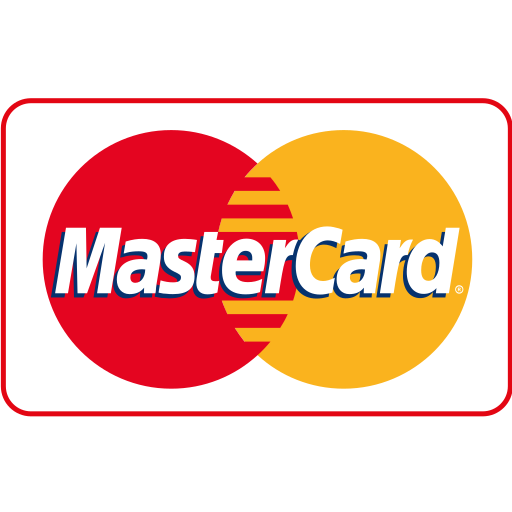
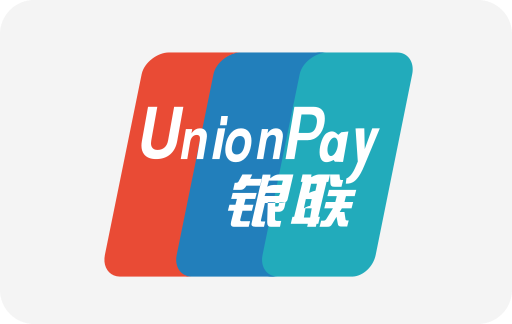
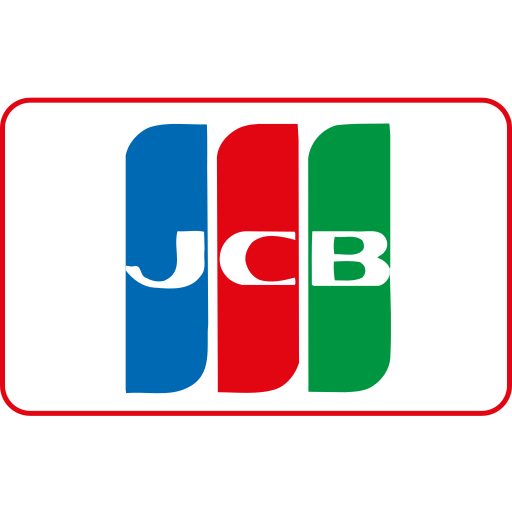

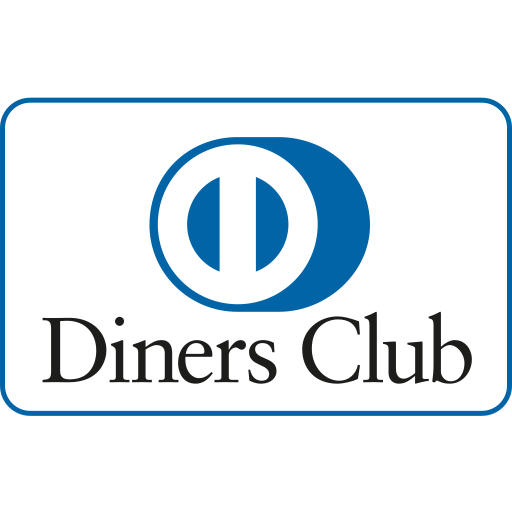

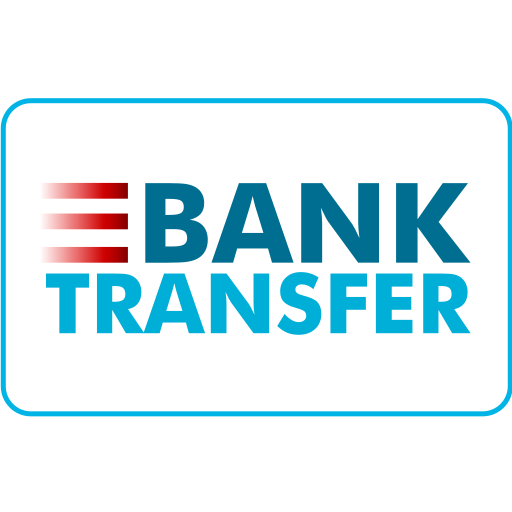
WebSeoSG offers the highest quality website traffic services in Singapore. We provide a variety of traffic services for our clients, including website traffic, desktop traffic, mobile traffic, Google traffic, search traffic, eCommerce traffic, YouTube traffic, and TikTok traffic. Our website boasts a 100% customer satisfaction rate, so you can confidently purchase large amounts of SEO traffic online. For just 40 SGD per month, you can immediately increase website traffic, improve SEO performance, and boost sales!
Having trouble choosing a traffic package? Contact us, and our staff will assist you.
Free consultation